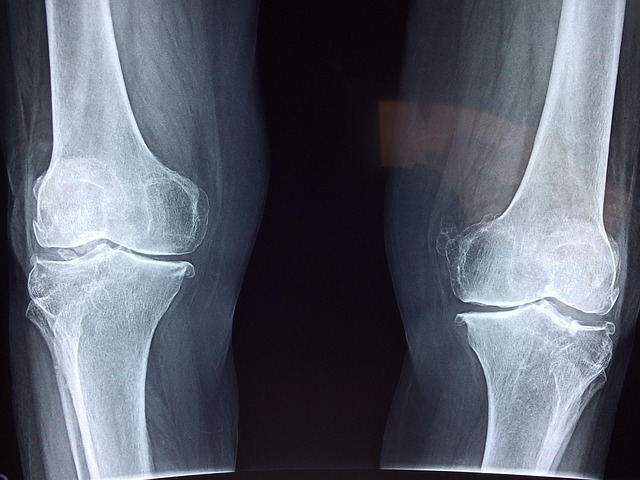Stem cell injections for arthritis are a promising orthopedic treatment, offering natural healing power to ease joint pain and improve mobility. Recent studies show encouraging outcomes in osteoarthritis patients, with potential to revolutionize arthritis management. Ongoing research focuses on optimal cell sources, delivery methods, and combination therapies. While the future looks bright, ethical considerations and challenges must be addressed, including sourcing, safety, regulation, cost, and accessibility.
“The future of orthopedic care is poised for a revolution through stem cell research, particularly in the context of managing arthritis. This article explores the promising potential of stem cell injections as a novel approach to alleviating arthritis symptoms and repairing damaged joint tissues. We delve into the current state of orthopedic stem cell studies, highlighting recent advancements. Furthermore, we discuss future prospects, including innovative techniques, and address ethical considerations surrounding this groundbreaking therapy. With ongoing research, stem cell injections for arthritis could redefine treatment options.”
Understanding Stem Cell Injections for Arthritis: A Promising Approach
Stem cell injections for arthritis represent a promising therapeutic approach in orthopedic conditions, offering potential relief for patients suffering from this debilitating disease. Arthritis, characterized by joint pain and inflammation, significantly impacts mobility and quality of life. Traditional treatments often include medications and physical therapy, but stem cell therapy presents a novel option with the potential to regenerate damaged cartilage and reduce inflammation.
Stem cells have the unique ability to differentiate into various types of cells, including those found in joints. When injected into arthritic joints, these cells can promote tissue repair, suppress inflammation, and potentially slow down the progression of arthritis. Recent studies have shown encouraging results, demonstrating improved joint function and reduced pain in patients receiving stem cell injections. This advancement in orthopedic care offers hope for a more effective and long-lasting solution to manage arthritis symptoms, potentially transforming the treatment landscape for this widespread condition.
Current State of Orthopedic Stem Cell Research
The current state of orthopedic stem cell research is a promising landscape, painting a bright future for managing and potentially curing various conditions affecting the musculoskeletal system. Stem cells, with their remarkable ability to differentiate into specialized cell types, have emerged as a powerful tool in orthopedics. Research is heavily focused on harnessing these cells’ potential to repair damaged tissues, including cartilage and bone. One of the most exciting applications currently being explored is the use of stem cell injections for arthritis, offering a novel approach to alleviating joint pain and improving mobility in patients with osteoarthritis.
Studies have shown that injecting autologous or allogenic stem cells into arthritic joints can stimulate tissue regeneration, reduce inflammation, and promote the formation of new, healthy cartilage. This method presents a potentially less invasive alternative to traditional surgical interventions, providing patients with a more convenient and effective treatment option for managing orthopedic conditions. The field is rapidly evolving, with ongoing trials investigating optimal cell sources, delivery methods, and combination therapies to maximize therapeutic outcomes in arthritis and other orthopedic disorders.
Future Prospects and Advancements in Stem Cell Therapy
The future of stem cell research in orthopedics holds immense promise, particularly for managing and potentially reversing degenerative orthopedic conditions like arthritis. Advanced techniques are continually refining the efficacy and safety of stem cell injections for arthritis, aiming to regenerate damaged cartilage and bone tissue. Scientists explore various sources of stem cells, from adult cells derived from fat or bone marrow to induced pluripotent stem cells, each offering unique advantages.
Research focuses on enhancing the survival and differentiation of injected stem cells within the body, ensuring they integrate seamlessly with existing tissues. This includes developing biomaterials that support cell growth and improving delivery methods for more targeted and controlled releases. As our understanding of stem cell behavior deepens, we can expect to see personalized therapies tailored to individual patient needs, revolutionizing treatment for arthritis and other orthopedic ailments.
Ethical Considerations and Challenges Ahead
The future of stem cell research in orthopedic conditions holds immense promise, but it is not without ethical considerations and challenges. As we explore the potential of stem cell injections for arthritis, for instance, several complex issues arise. One primary concern revolves around the sourcing of stem cells, whether derived from adult tissues or embryonic stem cells, each with its own set of ethical debates. Additionally, ensuring the safety and efficacy of these treatments is paramount, requiring rigorous clinical trials to understand long-term effects and potential risks.
Another challenge lies in navigating regulatory frameworks, which vary across countries, posing hurdles for standardized treatment protocols. Privacy and consent issues also demand attention, especially with advancements in autologous stem cell therapies that utilize an individual’s own cells. Moreover, the cost of stem cell treatments remains a significant barrier, necessitating innovative funding models to make these potential game-changers accessible to a wider patient population.
Stem cell research holds immense potential for transforming orthopedic care, particularly in managing arthritis. As our understanding of these versatile cells deepens, future advancements in stem cell injections for arthritis could revolutionize treatment, offering relief and improved mobility to patients worldwide. However, navigating ethical considerations and overcoming challenges will be crucial to unlocking the full promise of this therapy. Continued exploration and innovation in this field are essential to shaping a bright future for orthopedic conditions.
